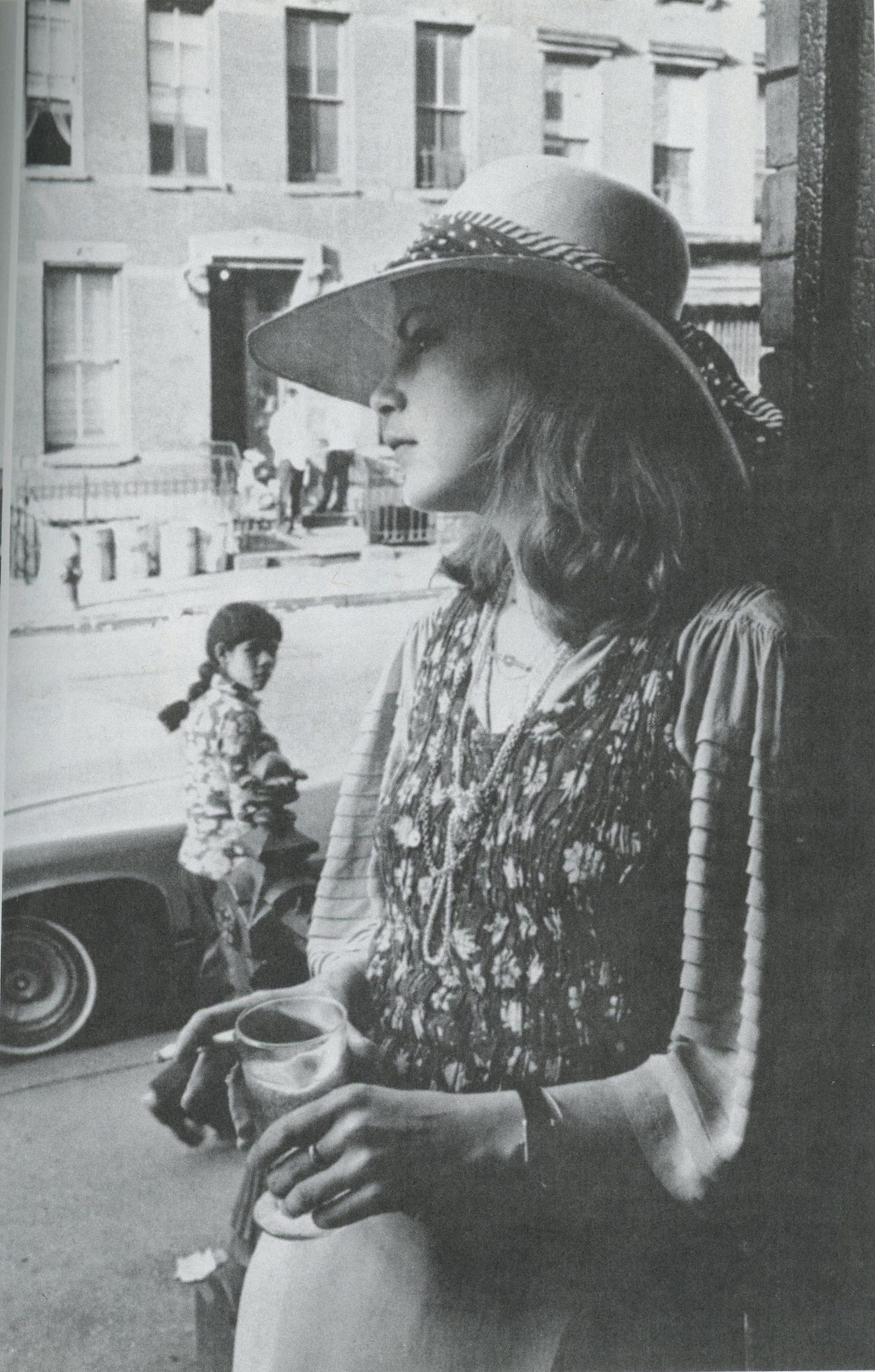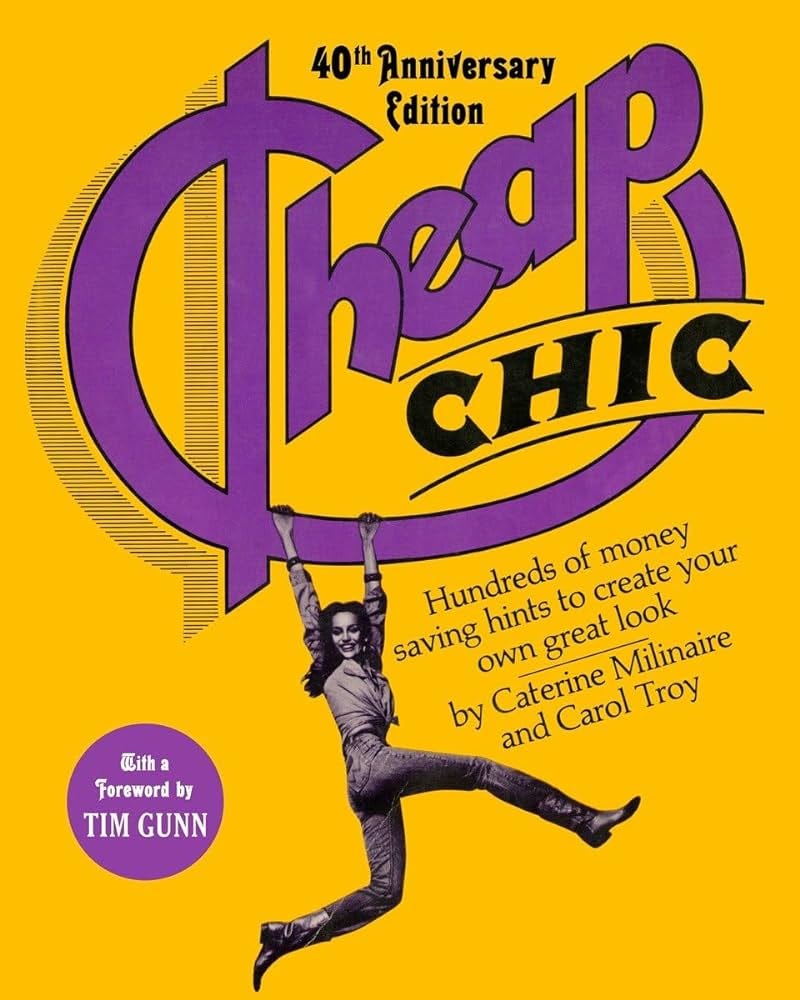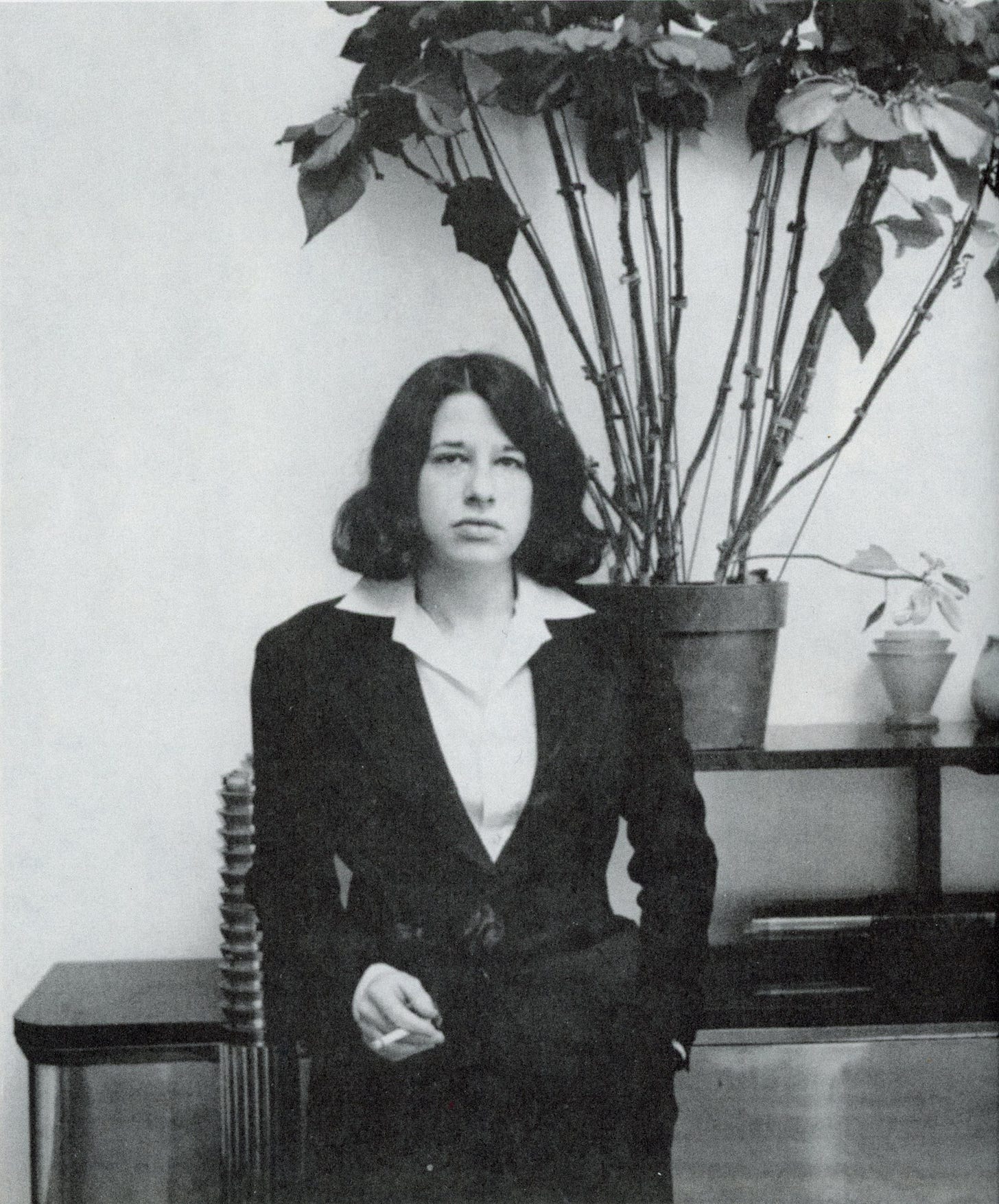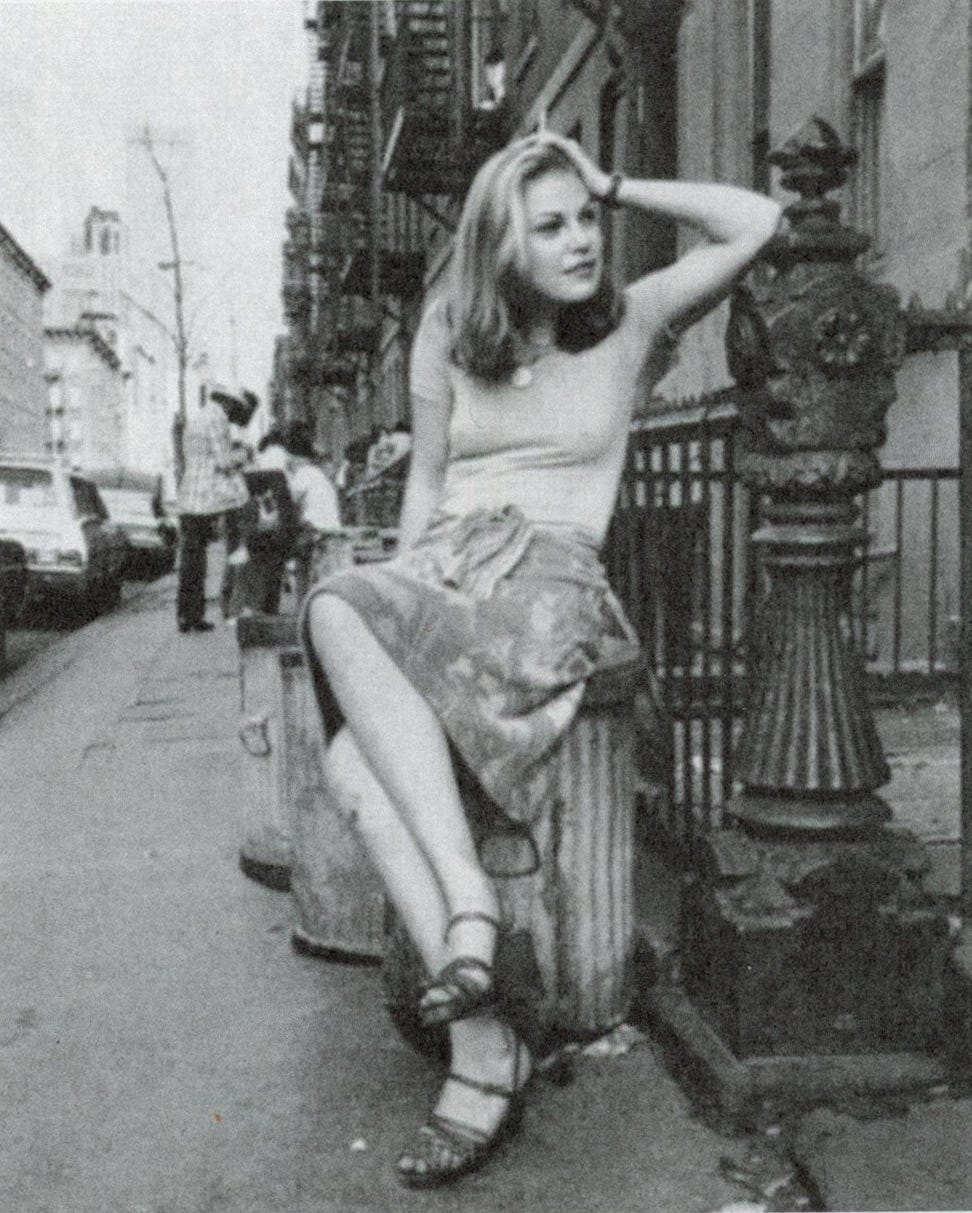The other day on Instagram I announced that I am pregnant, due in the spring. What this means for this newsletter is that all paid subscriptions will be paused around the time of birth for some as-yet-undetermined period. As I’ve never had a baby before—and have read far too many horror stories online—I’m not expecting to be publishing any new work during that time, though I rather hope for the occasional intellectual stimulation of dashing off a brief missive. More on my maternity break closer to that time.
Pregnancy and an imminent baby have made me forgo any thought of New Year’s resolutions or even goals for the year—launching into something completely unknown has left me unsure of what is even possible, therefore I’ve tempered career expectations by simply having none. Social media is currently awash in “In/Out” lists and resolutions, often involving clothes and shopping—dress as the outward manifestation of inner ideals for the year. These are very much about using clothes to craft a narrative of who someone wants to be. I see people writing of wanting to dress more eccentrically, or more femininely, sexily, or professionally—using a revamped personal style to inhabit their desired role for the year and future. As pregnancy has forced an almost complete annihilation of my own personal style (very little of my vintage wardrobe fits and maternity clothes are universally boring and ugly, leaving me a tiny sliver of possible items), I’m having to spend more time musing on the idea of personal style versus experiencing it.
One of the greatest books on personal style in Caterine Milinaire and Carol Troy’s Cheap Chic. First published in 1975, it is easy to pick up a copy of the fortieth-anniversary reissue online. Caterine began working for Queen magazine in London when she was just 18, helping to bring the new youth energy that was exploding across Britain onto its pages in the early 1960s. From there she went to American Vogue, producing the “Vogue’s Boutique” section, which introduced the idea of personal style into the American high fashion press. In 1970, she worked for Rags magazine, the first fashion magazine exclusively engaged with personal style in dress (I wrote the history of Rags for the 50th-anniversary archive, which can be purchased here)—Troy was the New York editor. Working at these magazines, Milinaire would travel constantly, finding interestingly dressed people, photographing and interviewing them—slowly building up a deep understanding of the how’s and why’s of personal style. For Cheap Chic, Troy and Milinaire broke down different aspects of personal dress into chapters (“First Layers,” “Classics,” “Second String Classics,” “Antiques,” “Sports Clothes,” “Ethnics,” “Wrappings,” “Work Clothes,” and “Mixes”), interviewing proponents (such as Rudi Gernreich and unisex uniforms), and all illustrated with copious streetstyle photographs and supplemented by advice and directions on where to find the multitude of unique items described.
From their introduction:
Personal style is what this book is all about. Fashion as a dictatorship of the elite is dead. Nobody knows better than you what you should wear or how you should look. What we want to do is lay out the alternatives, the guidelines, and show you the way some of the people we think look exciting today put it together for themselves. Your look might be a $2.98 T-shirt with $4.00 strapped canvas shoes from Woolworth’s, or maybe it’s the day you stun the office with your St. Laurent blazer and $100 rodeo boots, but your look should be in harmony with the way you live, who you are, and not reflect what the fashion magazines (or even we) might say.
The basic concept of Cheap Chic for both men and women is to have a few clothes that make you feel good rather than a closet full of mismatched fashions. Find the clothes that suit you best, that make you feel comfortable, confident, sexy, good looking and happy…and then hang onto them like old friends.
Below are two of the interviews—these women have diametrically opposed views on fashion and personal style. One, (a very baby-faced) Fran Lebowitz, was then a jobbing journalist and not the literary celebrity she would become a few years later, yet she had already developed a rigorously restrained palette of dress. The other, Nancy Crow, is an unknown; I was unable to uncover anything out about this young Minnesotan in publishing whose clothing ethos was of unrestrained joy and experimentation.
Maybe you’re looking for more rigor in your wardrobe or more fun (what I will always be a proponent of) or maybe your style is settled somewhere far different—hopefully reading Fran and Nancy’s thoughts on fashion is illuminating in some way.
Fran Lebowitz: Grouchy Simplicity
Fran Lebowitz is a magazine and scriptwriter of great wit and imagination, but when it comes to her own clothes she follows a strict line of quality and austerity. She owns very few clothes, yet always appears in well-tailored, neat outfits. Fran insists on following her basic ideas in getting dressed, for fear of wasting her energy on frivolity.
"I have no colors in my clothes. The most colorful I get is with two pale-pink shirts. I get too hot if there is red around me. I'm so particular about what I wear that my parents have been afraid to buy me clothes since I was six years old. I'm so conservative I still wear clothes from high school, but I haven't worn a dress in five years. It comes down to the idea that I don't like my clothes to make me stand out. To me, if anyone gets remarked on because of what they wear, they are badly dressed.
"I can't believe what some people wear. A great majority of kids in their late teens are the worst dressed . . . incredible platform shoes, glitter, hideous fabrics ... useless extravagance.
"The only thing I ever regretted buying was this pair of black patent-leather shoes for $65 at Charles Jourdan. They're ridiculous, but I'll wear them until they fall apart. My most precious possession is a terrific riding jacket that was made a century ago for the aunt of a friend. She was eighty when she died, wearing it, and it is still holding up impeccably. The silk lining by itself is a beauty. I wear it with $2 white cotton sailor pants.
"A fan sent me a T-shirt inscribed with all sorts of ugly lines. I hate gimmicks and it prompted me to write a few paragraphs in Interview magazine.
“Clothes with pictures and/or writing on them—yes, another complaint. Now I'm not just talking about Vuitton bags. Or Gucci wallets. Or Hermes scarves. Designers and/or business concerns who splash their names and initials all over overpriced accoutrements of dubious quality are of course exceedingly distasteful, but I am not Talking about the larger issues. Open-necked deco-ish shirts with repeating patterns of middle-sized silhouettes of sailboats. Blue jeans depicting the death of Marilyn Monroe in water-proof pastels. Dresses upon which one (but preferably two) can play Monopoly. Overalls which remind toddlers, through the use of small pink animals spouting comic strip balloons, to brush their teeth. T-shirts which proclaim the illegal sexual preferences of the wearer. Ectetera. Ectetera.
"While clothes with pictures and/or writing on them are not entirely an invention of the modern age, they are an unpleasant indication of the general state of things, which encourages people to express themselves through their clothing . . . I mean, be realistic. If people don't want to listen to you, what makes you think they want to hear from your sweater?
"There are two main reasons why we wear clothes. First, to hide figure flaws, of which the average person has at least seventeen. And second, to look cute, which is at least cheering. If some people think that nice, muted, solid colors are a bit dull, they can add some punch with stripes, plaids, checks, or if it summer and they're girls, small dots. For those of you who feel that which this is too restrictive, answer me this: If God meant for people to walk around in coats that have pictures of butterscotch sundaes on them, then and/or why does He wear tattersall shirts?"
Nancy Crow: If It Feels Good, Wear It
Nancy grew up and went to college in Minnesota and moved to New York, where she works in a publishing house. Her philosophy of dressing is "if it feels good, wear it."
"I think you gotta keep your head straight about clothes—they're entertainment. After I went through the whole Peck & Peck conservative college girl thing in Minneapolis, I realized that fashion is actually wearing things that feel good together, that delight you, and knowing that 'bad taste' is just a figment of someone else's paranoia. I don't worry if I 'coordinate,' because somehow it always all falls into place. I don't ever take myself seriously; I enjoy. A friend of mine said I dressed like a circus, 'but for a clown, you certainly look gorgeous most of the time.'
“My clothes are fun. They're just a collection that's evolved over the last six years, one thing here and one thing there. And it all pleases me. That's what clothes are for, aside from protecting you from the rain and giant armadillos, you know.
"I don't shop. If the moment is right, know it. If the thing, the money, and I are all together, that's my cue. But aside from things like sweatsocks or safety pins, I rarely go out to buy something. You may find something you like in a department store, but there are miles of racks, and you can see yourself on the street four times in one day. I prefer small, out-of-the-way places. The people are nicer, and such places are really not more expensive. Get to know a few good little places and stop in every now and then.
"There's no one thing in my closet that I love—everything is my favorite. I never get up and think, 'I don't have a thing to wear!' It's just a matter of what I feel like mixing. The basic secret of having a style is confidence—you exude it, and people assume that what you wear is not only fashionable, but way-the-hell-ahead-of-them chic. It's a savvy you have about your clothes, and with savvy you can get away with anything.

"I try to do a kind of 'lateral thinking' with old clothes. I took a hand-sewn, beautiful silk bed jacket, cut it in tight, added lacing across the bodice, and now it's a really sexy top for evening. I found an antique ivory velvet dress cut like a Vionnet—it had stains under the arms, but I fixed it by cutting them deeper; that made it much sexier, too. But it was one of several of my 'finds’ my father threw down the incinerator—he was offended because I'm no longer 'Peck & Pecked.' "Last year I probably spent about $150 on clothes. My boots are from 1970. I bought two pair of shoes in the past year for about $25 each, and a few this's and that's when lightning struck. I buy only things that I love and will love until they drop off me or the hanger. I have an acrylic knit skirt with an outrageous palm tree design that I found in some little shop in Minnesota in 1969; I just went straight to it. If you know what you like, you can make terrific finds in places like K-Mart, the Canal Street Flea Market in New York, and the Rag Factory in Minneapolis; even from your relatives and friends. I bought a winter maxicoat for $130 in 1969, and it's served me well each winter since. It's immensely warm, a lasting classic design.

"I do spend money on good jewelry—gold is warm, and platinum is class. If you live in it, you assume a certain haute, which is getting back to attitude.
"That is the basic, a sense of ease and a sense of humor. But always, the awareness of our time limit. We're only human; we deserve to enjoy."











I translated this book in French ! Géraldine Cerf de Dudzeele
Congratulations!!! Love that you are taking a proper maternity leave and having no expectations!!
I was going to try and score a copy of Milinaire’s other book “Birth” when I was pregnant but never got around to it. (I once emailed you about hoping for an interview with her).
Thanks for the this post, glad I’m not the only one who’s Googled people in the book haha! Some interesting ones like Ingeborg Day, and an uncredited photo of Jane Forth. (Love her!)
Hope the pregnancy is going well! 🙏🏻
I was pregnant during covid, so I never left the house and bought as little maternity clothes as possible. But Natalie Martin does make some (non maternity) dresses that would work, and the textiles usually have a nice vintage look. A little boho but would work for post partum too. Kind of for warmer weather, not sure when you’re due.